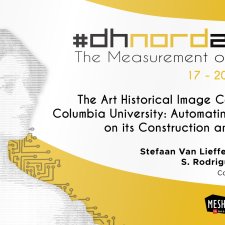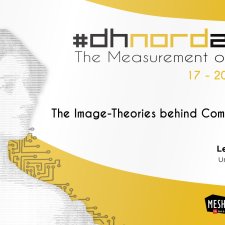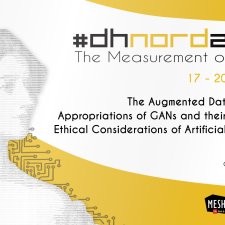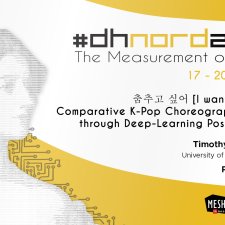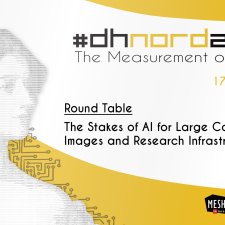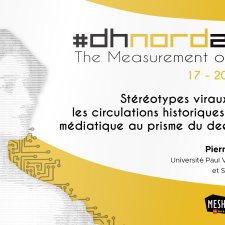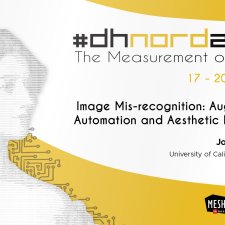Notice
Yet another digital surrogate? Computer vision and the future of collections management systems
- document 1 document 2 document 3
- niveau 1 niveau 2 niveau 3
Descriptif
The collection catalog - and today, the museum collection database - has been the foundational tool for art history for almost two centuries. Despite enormous changes over this time in our theoretical approach to the discipline, basic cataloging of objects (who created them, how and when they were made, what concepts they illustrate or formal properties they exhibit, where they have been displayed, and who has seen them) is essential to virtually all of our historical argumentation. Whether we are using these descriptions as evidence in historical argument, or challenging and replacing them with new historical contexts, art cataloging remains central. Data-based approaches to art history, including computer vision, may make description even more central, with its focus on iconography, style and formalism, pose analysis, etc.
What could computational art history outputs like trained models or image vectors do for the field if they could be first-class digital objects within museum collections databases, joining the digital surrogates, conservation and provenance records, and scholarly bibliographies already curated there? In this talk I will discuss recent work on a prototype project to integrate simple machine learning mechanisms into collections management for the Carnegie Mellon University photo archives, and what its user interfaces and back-end architecture suggest for future CMS designs. Such a shift could help transform museum computer vision experiments from fun toys into deep research and exploration tools, massively magnifying our research impact in the real world and transforming the experience of both expert and casual users of these systems.
Matthew Lincoln (Carnegie Mellon University)
Thème
Dans la même collection
-
Angelic Movement. Exploring and Understanding Art, Iconography and Composition with Machine Learning
2e intervention de la 2e session du colloque DHNord 2020
-
Distant Viewing Toolkit: Software for Analysing Visual Culture
2e intervention de la 5e session du colloque DHNord 2020
-
The Art Historical Image Collection at Columbia University: Automating Research on Its Construction…
2e intervention de la 1ère session du colloque DHNord 2020
-
The Image-Theories behind Computer Vision
1ère intervention de la 3e session du colloque DHNord 2020
-
Understanding Images Through Machine Learning and Deep Learning
Table ronde de la 2e journée du colloque DHNord 2020
-
The Augmented Dataset: Artistic Appropriations of Gans and Their Bearings on Ethical Considerations…
Intervention de la 4e session du colloque DHNord 2020
-
From One Image to Another: Circulations, Transmissions, and Intervals
Table ronde de la 1ère journée du colloque DHNord 2020
-
"I Want to Dance": Comparative K-Pop Choreography Analysis Through Deep-Learning Pose Estimation
3e intervention de la 2e session du colloque DHNord 2020
-
The Stakes of AI for Large Collections of Images and Research Infrastructures
Table ronde de la 4e journée de DHNord 2020
-
Stéréotypes viraux : analyser les circulations historiques de l'image médiatique au prisme du deep …
LanglaisPierre-Carl3e intervention de la 1ère session du colloque DHNord 2020
-
Image Mis-recognition: Augmentation, Automation, and Aesthetic Intelligence
2e intervention de la 3e session du colloque DHNord 2020
-
Transfer Learning and Visualization of Neural Networks for Artistic Images
1ère intervention de la 2e session du colloque DHNord 2020




